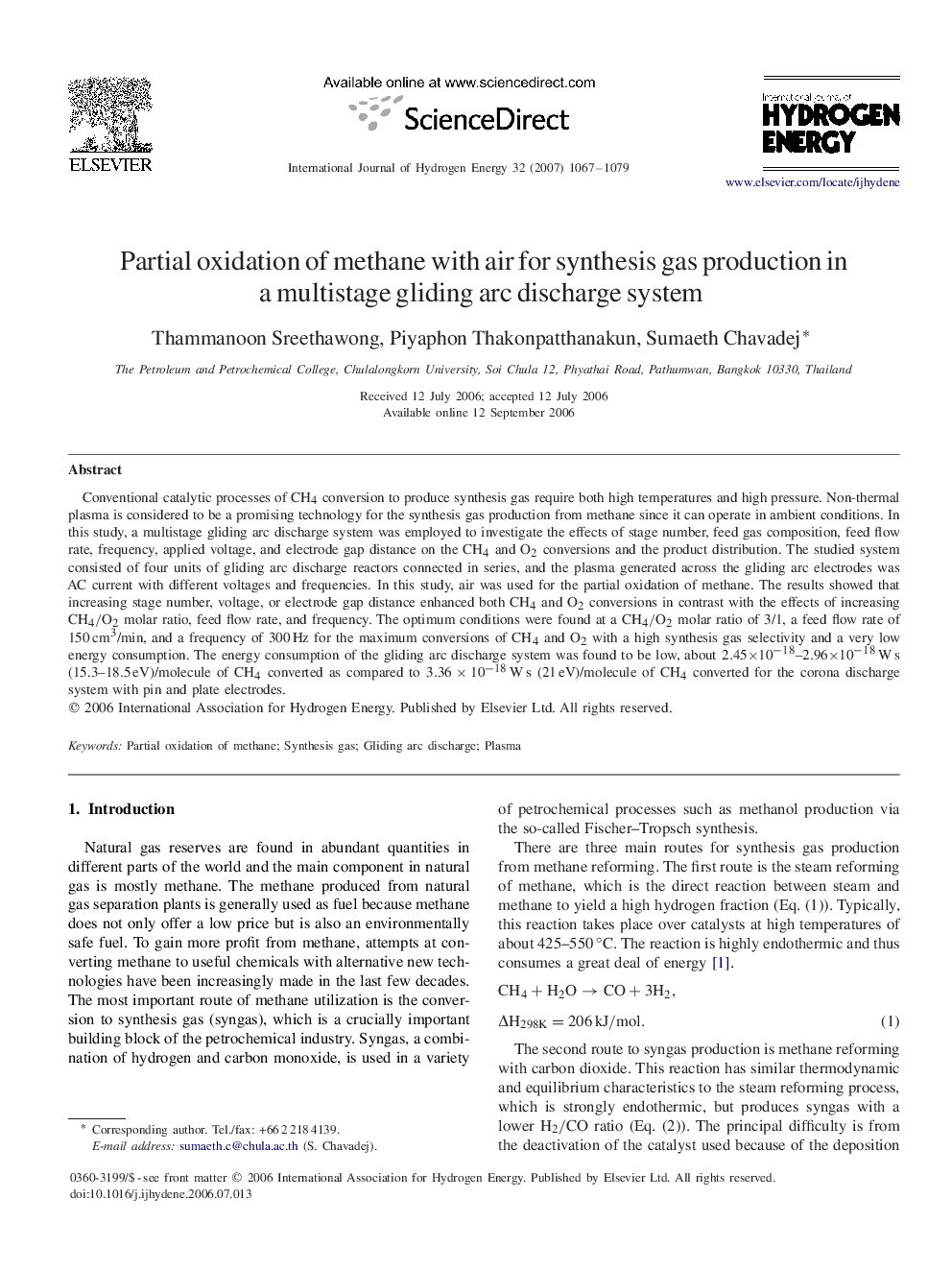| Article ID | Journal | Published Year | Pages | File Type |
|---|---|---|---|---|
| 1280657 | International Journal of Hydrogen Energy | 2007 | 13 Pages |
Conventional catalytic processes of CH4CH4 conversion to produce synthesis gas require both high temperatures and high pressure. Non-thermal plasma is considered to be a promising technology for the synthesis gas production from methane since it can operate in ambient conditions. In this study, a multistage gliding arc discharge system was employed to investigate the effects of stage number, feed gas composition, feed flow rate, frequency, applied voltage, and electrode gap distance on the CH4CH4 and O2O2 conversions and the product distribution. The studied system consisted of four units of gliding arc discharge reactors connected in series, and the plasma generated across the gliding arc electrodes was AC current with different voltages and frequencies. In this study, air was used for the partial oxidation of methane. The results showed that increasing stage number, voltage, or electrode gap distance enhanced both CH4CH4 and O2O2 conversions in contrast with the effects of increasing CH4/O2CH4/O2 molar ratio, feed flow rate, and frequency. The optimum conditions were found at a CH4/O2CH4/O2 molar ratio of 3/1, a feed flow rate of 150cm3/min, and a frequency of 300 Hz for the maximum conversions of CH4CH4 and O2O2 with a high synthesis gas selectivity and a very low energy consumption. The energy consumption of the gliding arc discharge system was found to be low, about 2.45×10-182.45×10-18–2.96×10-18Ws (15.3–18.5eV)/molecule of CH4CH4 converted as compared to 3.36×10-18Ws (21 eV)/molecule of CH4CH4 converted for the corona discharge system with pin and plate electrodes.
